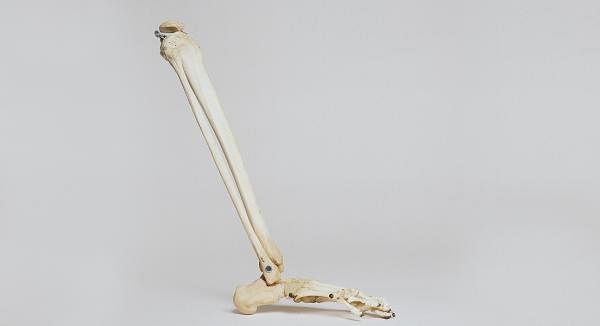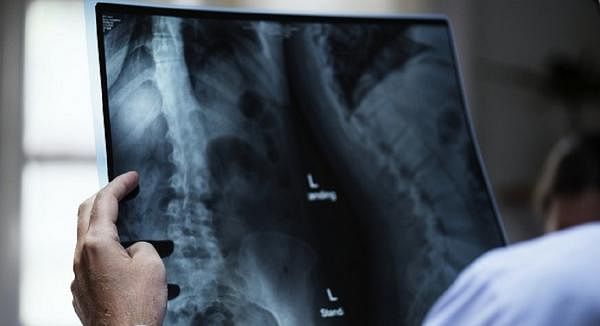Six Steps to Better Bone Health
Why you can trust Nutri Advanced Every article on our site is researched thoroughly by our team of highly qualified nutritionists. Find out more about our editorial process.
People only usually start to worry about bone health when they know there is something wrong. And whilst it’s great to take positive action when a diagnosis has been made, it’s even better to take steps to build healthier bones now and prevent future problems from occurring at all. We thought we’d join in and help to raise awareness around this worthy cause. So we’ve put together some useful tips to help you build better bones, whatever your age or current health situation.
1. Exercise
Top of the list when it comes to protecting your bones is exercise and that’s because bone is a living tissue, which will react to increases in loads and forces by growing stronger. The best types of exercise to focus on are weight-bearing exercises such as yoga, brisk walking and hiking, running or racquet sports combined with some strength or resistance training sessions using free weights, weight machines or your own body weight. Most gyms have instructors that can help to put a programme together to make sure your exercise sessions target healthy bones as well as improved fitness and the multitude of other benefits you will gain from exercising regularly.
2. Check Your Vitamin D (and don’t forget vitamin K!)
Vitamin D is commonly referred to as the sunshine vitamin because our bare skin manufactures it on contact with the sun’s rays. More time spent indoors, or if outdoors - covered up or covered in suncream, mean that our body’s natural production of vitamin D is now commonly low. Add to this the fact that vitamin D isn’t naturally present in many foods and you’ll be starting to understand why many people are deficient in this important nutrient. Vitamin D is important for lots of aspects of health and not least for its role in building healthy bones. Vitamin D is essential for the bone growth and remodelling process carried out by osteoblasts and osteoclasts. It also supports calcium and phosphorus absorption in the intestines. You can easily get your levels checked by your GP. If, like most people, you need to give your levels a boost, make sure you choose a supplement that contains vitamin D3 with added vitamin K2 because these two nutrients work closely together to support bone health, with vitamin K2 helping to draw calcium into the bones where it is needed. Not enough vitamin K is linked to low bone mass and osteoporosis so its important to ensure adequate intake.
3. Add Soy Foods to your Diet
Research has found that soy foods rich in isoflavones favorably affect bone turnover and spinal bone mineral density in perimenopausal and post-menopausal women. In addition, it has been suggested that soy protein, when substituted for animal protein, may indirectly enhance bone strength and decrease calcium excretion.
4. Supplement with algae-derived calcium to increase your intake of calcium, magnesium and essential co-factors
Calcium is a key mineral when it comes to bone health. However, there are other vitamins and minerals such as magnesium, in particular, which also have a key role to play and yet are often forgotten when it comes to bone nourishment. South American algae (Algas calcareas) is an excellent source of bioavailable calcium and other nutrients essential to bone formation including magnesium, boron, copper, manganese, silicon, nickel, selenium, strontium, phosphorus, potassium, vanadium, and zinc. Drawing the nutrients from the seawater, Algas calcareas is a natural, wholefood source of calcium and supporting minerals and is highly bioavailable. In terms of calcium supplementation, our recommendation is to choose calcium from an algae source as you will not only be providing your body with calcium but all the other essential nutrients that are often forgotten but that your bones desperately need too.
5. Address your Acid: Alkali Balance
Much has been written in the press in the last year or so about acid: alkali balance, and how you can change your diet to improve this balance in your body. If this is something that has sparked your interest then you will be pleased to know that taking steps to support a more alkaline state has benefits for your bone health too. The major reservoir of alkaline base is the skeleton, in the form of alkaline salts of calcium, which provide the buffer needed to maintain blood pH when it becomes too acidic. If calcium salts are regularly pulled out of bone to balance an overly acidic diet however, you can quickly see how the negative effects on our bones can occur.
Dietary-wise
Increased consumption of fruits and vegetables and plant-based proteins such as beans and lentils are consistently associated with a more alkaline diet and greater bone mineral density.
6. Increase your omega-3s
And last but not least, omega-3 fats, Eicosapentaenoic Acid (EPA) & Docosahexaenoic Acid (DHA), which are found in rich supply in oily fish, are essential for many different aspects of health, and that includes healthy bones. Omega-3 fats helps to keep inflammation in check in the body. And whilst that might not sound very relevant for bone health, it really is! Chronic inflammation, regardless of its cause, activates bone cells called osteoclasts, and these are the cells that break bone down. In contrast, omega-3 fats can help to reduce inflammation and instead support the production of osteoblasts – the cells which build bone. Unfortunately, increasing your intake of oily fish is not necessarily the best solution because these types of fish (sardines, mackerel, anchovies, salmon & herring) can commonly be contaminated with harmful toxins and heavy metals. A daily supplement of omega-3 rich fish oil which has been purified to remove contaminants is generally agreed to be the best way to increase your intake of omega-3s to support healthy bones.
This website and its content is copyright of Nutri Advanced ©. All rights reserved. See our terms & conditions for more detail.
Nutri Advanced has a thorough research process and for any references included, each source is scrutinised beforehand. We aim to use the highest value source where possible, referencing peer-reviewed journals and official guidelines in the first instance before alternatives. You can learn more about how we ensure our content is accurate at time of publication on our editorial policy.
Most Popular Articles
-
7 Surprising Ways To Support Your Magnesium
If you are displaying signs of a magnesium deficiency, here are 7 ways to boost your magnesium levels that are easy to incorporate into your daily life. -
5 Best Vitamin C Supplements Picked By Our Experts
Learn more about the different types of vitamin C, the different benefits you get from different types, and what you get for spending more on a good supplement. -
Top 5 Vitamins For Energy And Tiredness Picked By Our Experts
The 5 best and most important vitamins for energy & tiredness including B vitamin food sources & best supplement forms for energy. -
Benefits of Myo-Inositol for Polycystic Ovary Syndrome (PCOS)
In this research review article, we take a closer look at a lesser-known natural compound called myo-inositol that has been found to have significant potential to improve many of the prevalent features of PCOS. -
Top 10 Reasons to Give Your Kids Omega-3
Read the top 10 reasons that kids should have plenty of Omega-3- an essential fatty acid- including for depression, brain function, sleep & reading/maths skills.














